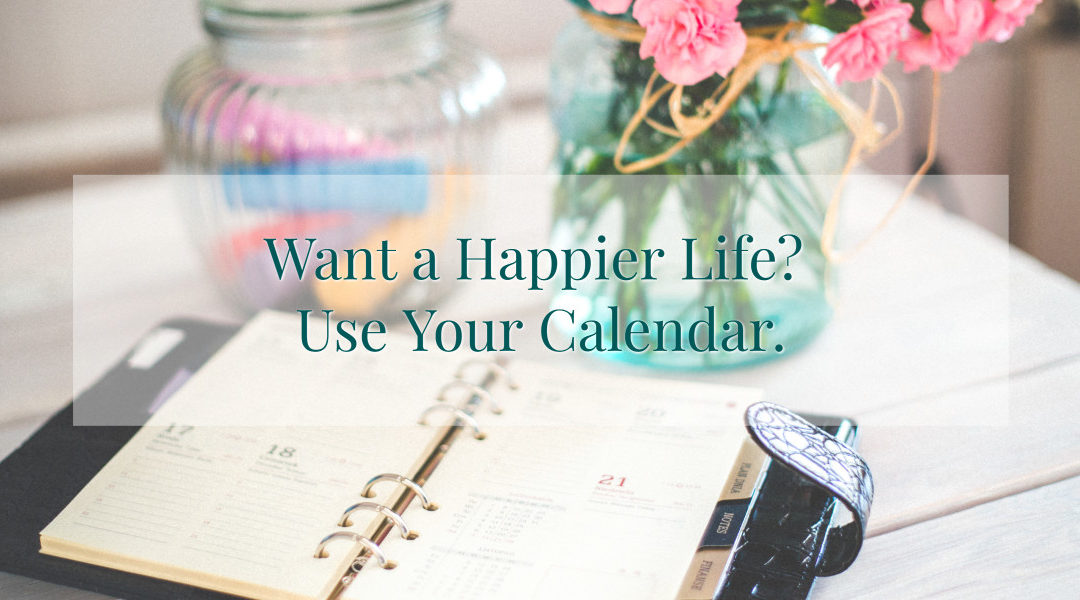“The three components of happiness are something to do, someone to love, and something to look forward to.” So wrote the late psychiatrist Dr. Gordon Livingston in his book “Too Soon Old, Too Late Smart: Thirty True Things You Need to Know Now.”
His words were an update to something the philosopher Immanel Kant wrote: “Rules for happiness: something to do, someone to love, something to hope for.”
It’s such a simple message, but doesn’t it strike you as entirely true?
Sure, our lives may look very different than Kant’s life in 18th-century Germany looked. Our core needs are the same, though. In addition to the basics like food and shelter, humans need to feel purpose, connection and hope. Technically we can survive without them, but they’re core elements of the human experience. They’re the things that fuel the soul. Having people to love, meaningful work to do and things to hope for makes it possible for us to power through difficult moments.
I like Dr. Livingston’s twist on Kant’s words because “something to look forward to” is more specific than “something to hope for.” And specificity can be a wonderful thing for time management and productivity. The more specific you can get about your meaningful goals and priorities, the easier it becomes to plan out your time in a way that serves those goals and priorities.
I also love the idea of happiness being linked to having something to look forward to for another reason: It’s a reminder of the value of your calendar.
When I talk about making plans and schedules to support time management and productivity, it’s not just because I want you to stop wasting time so you can pour all your hours into working and moving your business forward. Having a schedule, or a calendar—or whatever form your weekly and monthly plans take—isn’t just about being a more productive worker. It’s largely about carving out personal time so you can be with the people you love and do the other non-work things that bring you happiness. Meanwhile, you have enough time planned for your most important work tasks so you’re not distracted or overwhelmed while you’re enjoying personal time.
Your calendar can also become a place that sparks joy and helps you connect to happiness.
When you’re feeling down, you should be able to glance at your plans for the upcoming week or month and immediately see multiple things that you’re looking forward to. It’s a quick reminder that this challenging moment will pass and be replaced by something joyful. You might be overwhelmed or frustrated right now—but you have those dinner plans with an old friend tomorrow night, and that massage or hike to look forward over the weekend. Drop your shoulders, unclench your jaw and take a minute to reset before diving back into your tasks with renewed focus.
What do you have booked for the next few months? What are you looking forward to?
Remember, I’m talking specifics here—activities and plans that can be scheduled and put down on your calendar so that time doesn’t get swallowed up by work or other commitments. The beauty of scheduling “things to look forward to” is that they can be really big things like vacations, or small things that delight you. Maybe you schedule “takeout from the expensive Italian place, including dessert” for a random weeknight just because it’s your favorite and it’ll be a special treat to enjoy during a busy week.
3 Tips to Maximize Happiness Using Your Calendar
- Schedule time to schedule fun. When you’re really busy at work, it’s easy to get tunnel vision and stop making plans. You might go weeks or months before realizing that you’ve hardly seen anyone except your family and work team. If that sounds familiar, maybe you set aside time at the beginning of each month to do things like reach out to friends to schedule dinners or buy tickets to upcoming events.
- Use color coding or other visual cues to highlight the things in your calendar that you’re really looking forward to. Use a different color font or ink for activities you’re excited for. If you use a paper calendar, maybe you draw a little star next to these plans. You should be able to see a lot of things to look forward to every time you glance at your week/month ahead.
- Build in time to do nothing. Even when you’re doing things you love, being constantly on the go is a recipe for burnout. You don’t want to become so booked up with fun activities that you’re running on fumes. Make sure your weekly plans include blocks of time where you’re free to do anything you please, even if that means doing nothing at all.
If you want more support creating the weekly and monthly plans that include time for everything that’s important to you, I’m here. Join me for Time Matters Boot Camp 90-Day virtual program! If you’re ready to stop wasting time and finally take control of your time management and productivity challenges—so you can live the life you want—this boot camp is for you. We start June 6th… can you commit to putting this on your calendar? Click here for more information and to register.
Gratefully,
Sarah
- Time Management Strategies to Help You Land the Big Clients You Want - April 17, 2024
- Stress Management for a Productive Spring: Are You “Normal”? - April 4, 2024
- 3 Things Realtors Can Control in a Busy Spring Real Estate Market - March 15, 2024



